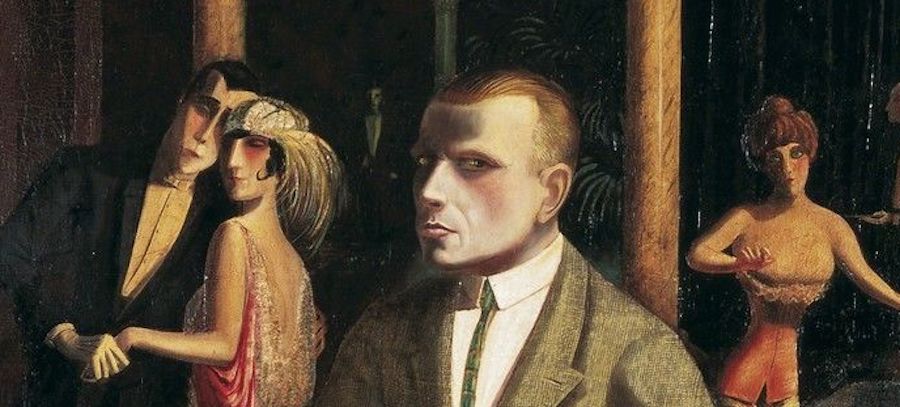The Modernist Period in English Literature occupied the years from shortly after the beginning of the 20th century. The Modernist period was marked by a strong and international break from tradition. This break includes a strong reaction against established religious, political and social views. Moreover, the thoughts that influenced this form of literature were inspired by Sigmund Freud and Charles Darwin. Modernist literature came into its own due to increasing industrialization and globalization. New technology and the horrifying events of both world wars made many people question the future of humanity: what was becoming of the world? Writers reacted to this question by turning toward Modernist sentiment. In other words, Modernism seeks to find new forms of expression and rejects traditional or accepted ideas.
The Main Characteristics of Modern Literature
The characteristics of Modern Literature can be categorized into Individualism, Experimentation, Symbolism, Absurdity, and Formalism.
Individualism

In Modern Literature, the individual is more interesting than society. The Modern writers presented the world or society as a challenge to the integrity of their characters. Ernest Hemingway is especially remembered for vivid characters who accepted their circumstances at free value.
Experimentation

Modernist writers broke free of old forms and techniques. Poets abandoned traditional rhyme schemes and wrote in free verse. Novelists defied all expectations. Writers mixed images from the past with modern languages and themes, creating a collage of styles. The inner workings of consciousness were a common subject for modernists. This preoccupation led to a form of narration called stream of consciousness. Authors James Joyce and Virginia Woolf, along with poets T.S. Eliot and Ezra Pound, are well known for their experimental Modernist works.
Absurdity
The carnage of two World Wars profoundly affected writers of the period. Several great English poets died or were wounded in WWI. For many writers, the world was becoming a more absurd place every day. Modernist authors depicted this absurdity in their works.
Symbolism
The Modernist writers infused objects, people, places, and events with significant meanings. The idea of a poem as a riddle to be cracked had its beginnings in the Modernist period. Symbolism was not a new concept in literature, but the Modernists’ particular use of symbols was an innovation. They left much more to the reader’s imagination than earlier writers.
Formalism
Writers of the Modernist period saw literature more as a craft than a flowering of creativity. The idea of literature as craft, fed the Modernists’ desire for creativity and originality. Modernist poetry often includes foreign languages, dense vocabulary, and invented words.
Read this for book recommendations to get you out of a reading slump.
Other Characteristics of Modern Literature
- Unlike the Romantic worldview, the Modernist writers care little for nature.
- The Modernist writers were interested in deeper reality than surface reality in their literary works.
- In other words, there was less emphasis on art’s reflection of external reality.
- Most of the literary works of the Modern Age were influenced by the disillusionment that came after World War II.
- Irony, satire, and comparisons are used frequently to illustrate points regarding society.
- Modern Literature with its modern themes and techniques appeared as a reaction against the Victorian Age with its restrictions and traditions.
- There is no such thing as absolute truth. All things are relative.
- According to the Modernists, life is unordered.
- Language is seen as complex.
- Modernist fiction spoke of inner self and consciousness, and many writers of that age-adapted the stream of consciousness technique in their writings, such as James Joyce in his literary work: Ulysses.
- Instead of progress, the Modernist writer saw a decline of civilization.
- Whereas earlier, most literature had a clear beginning, middle, and end (or introduction, conflict, and resolution), the Modernist story was often more of a stream of consciousness.
Modernist Structure of Literary Works
Character
There was a disappearance of character summary. This is clear in Dickens’ literary works such as Great Expectations.
Plot
Most of the plots of Modern literature are different from that of ancient works. The Modernists did not use plots with sudden climactic turning points and clear resolutions. Instead, they used plots with open unresolved endings.
Style
In their literary works, The Modernist writers adapted the stream of conscious technique. Virginia Woolf and James Joyce are regarded as the master of using this literary technique in writing.
The Protagonist
Finally, Modernism also abandoned one of the most fundamental types of character: the hero. What constitutes heroism has always aroused debate. The typical protagonist of modernism having lost faith in society, religion, and the surrounding environment, seem also to have lost any claim to heroic action.
About two and half years too old to be good at technology, but a bit of a self-professed book-nerd! That is exactly how I’ll describe myself. With an undying passion for reading and writing, I’ve landed in RangeInn as a Lifestyle Author. Yeah, that’s my new gig and I’m super excited to be part of the team. My articles are mostly about pop culture, celebrity gossip, entertainment, fashion & beauty, personality & spirituality, food, life hacks, books, movies and basically anything & everything that piques my interest.
Want me to write about something? Leave me a comment to connect with me. I’d love to hear from you!







